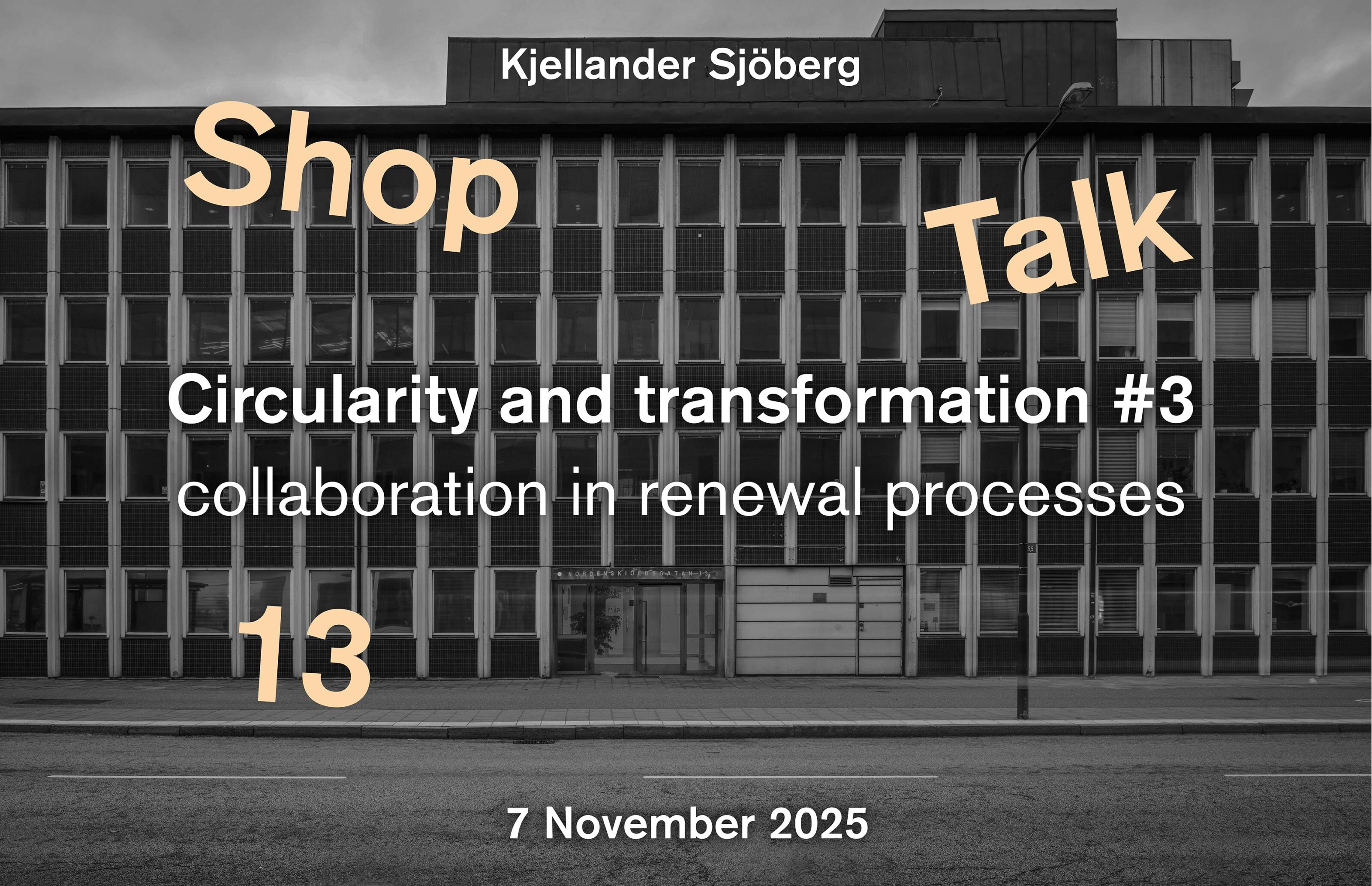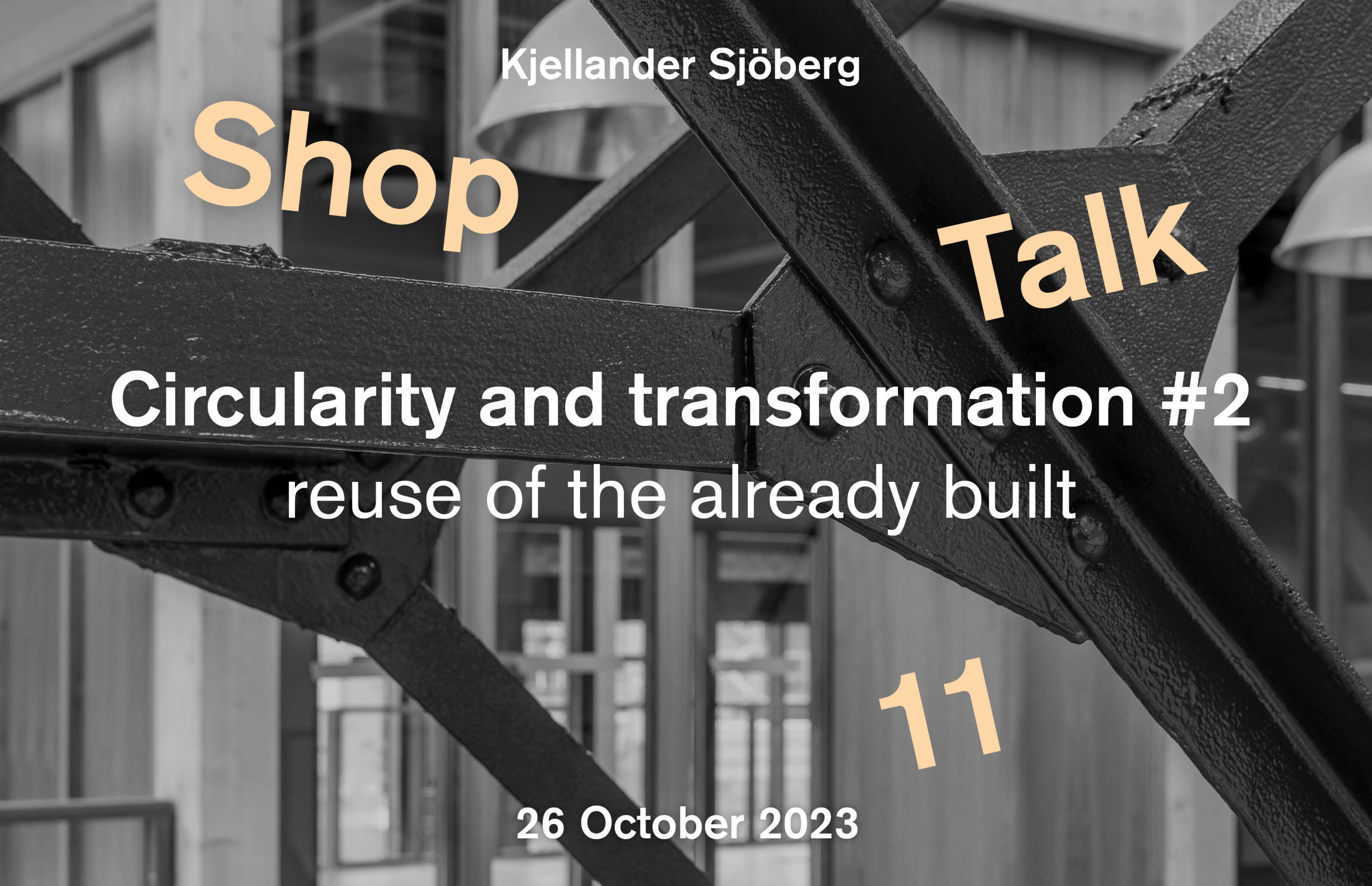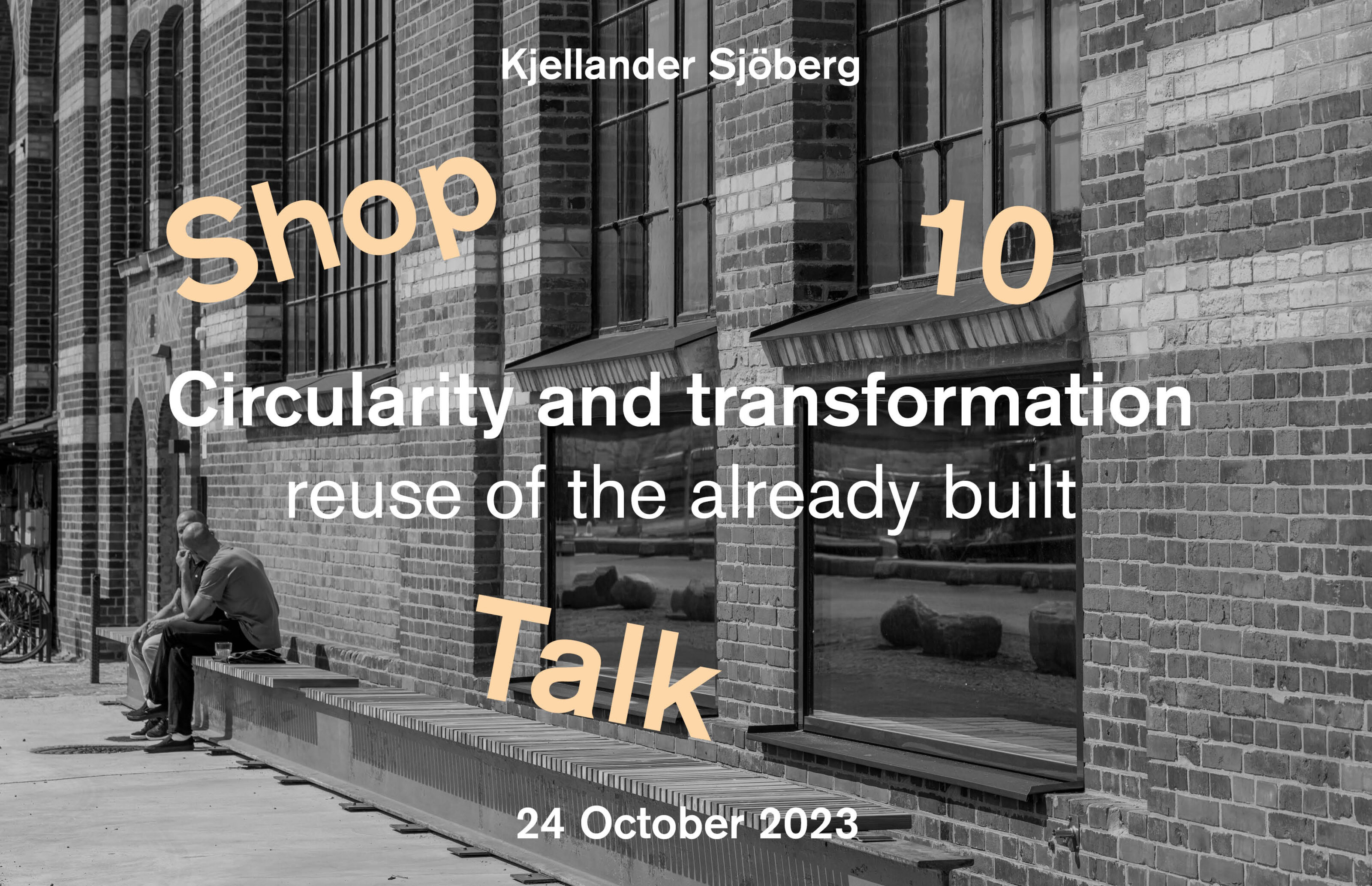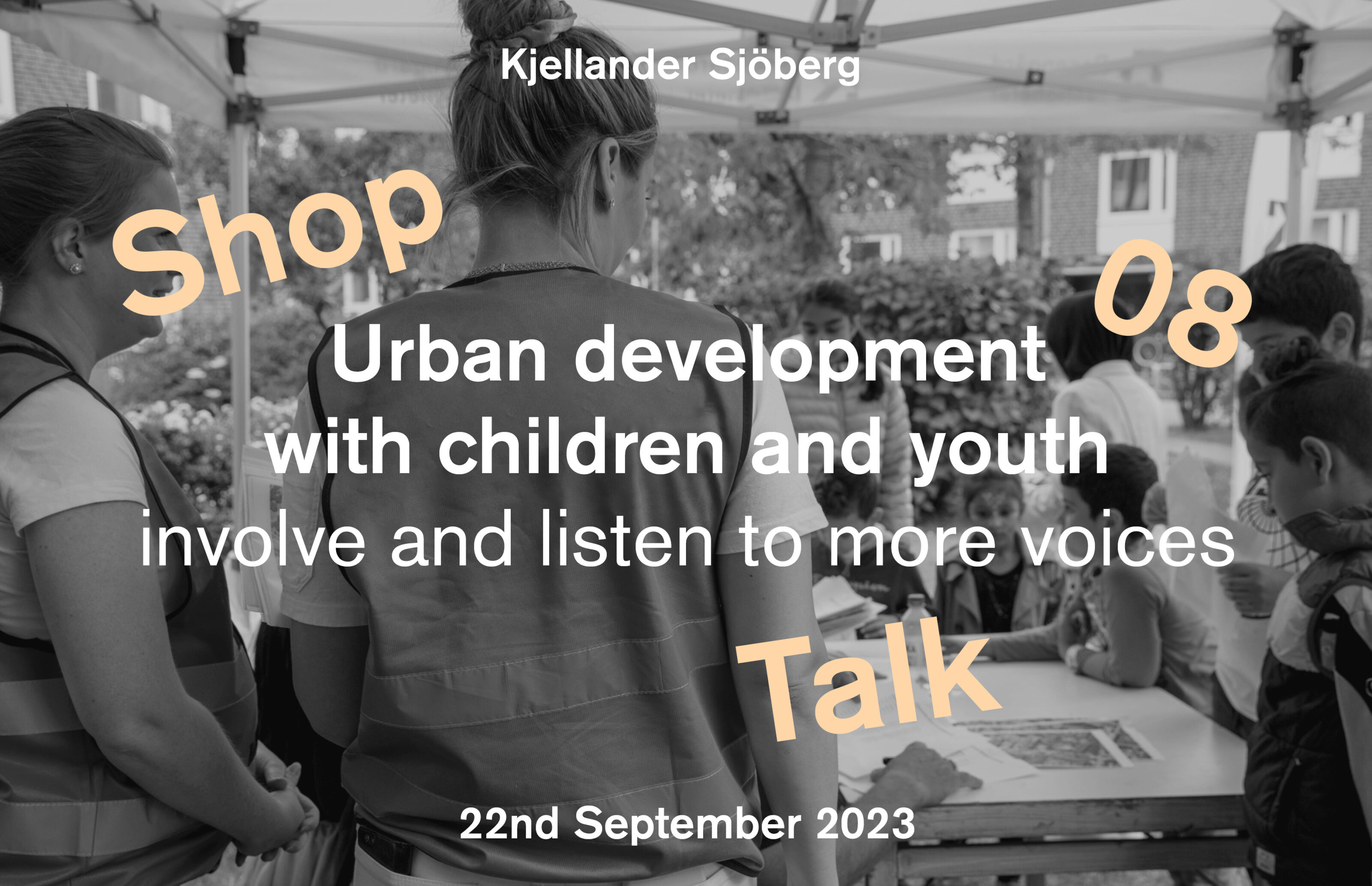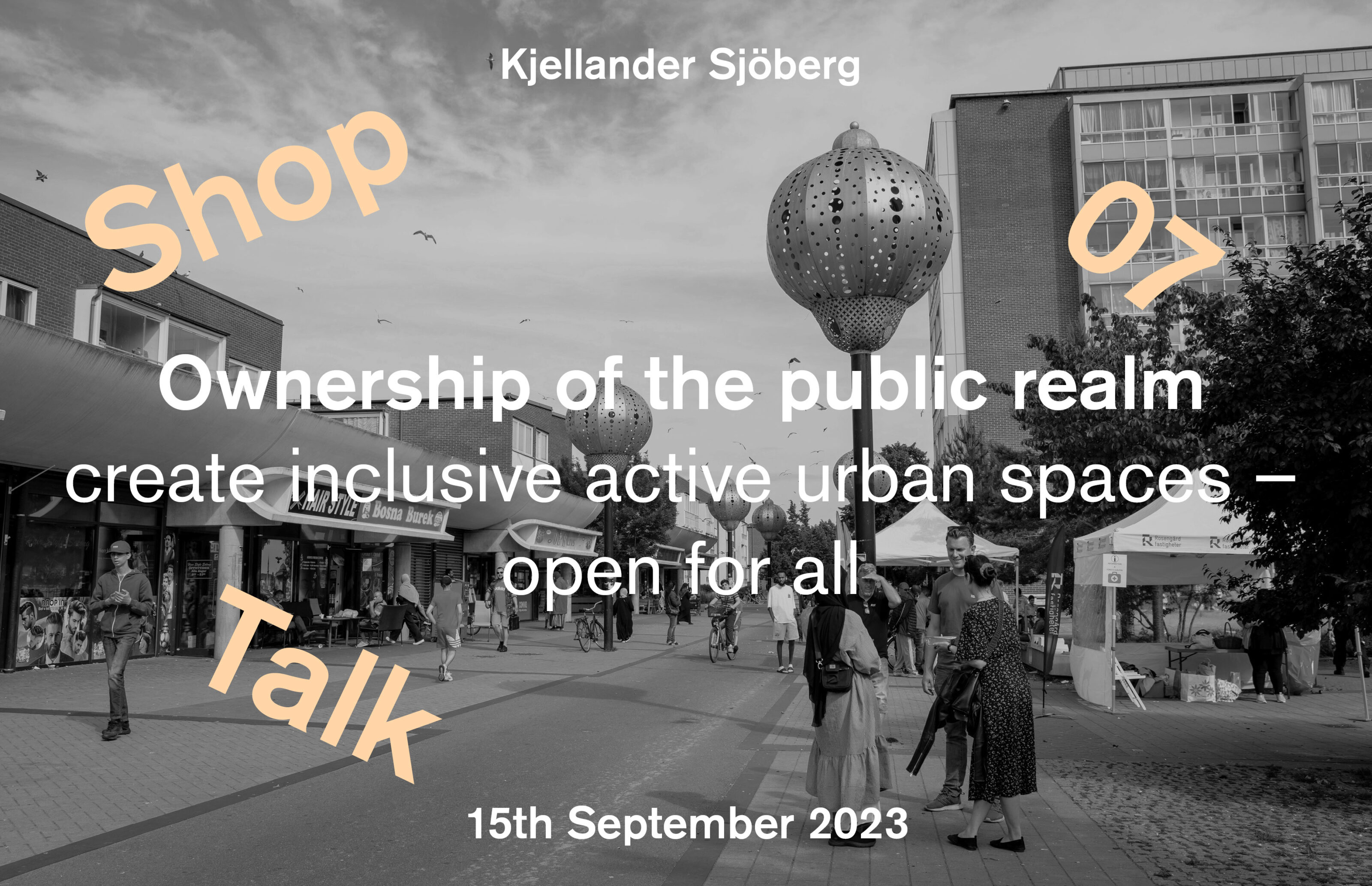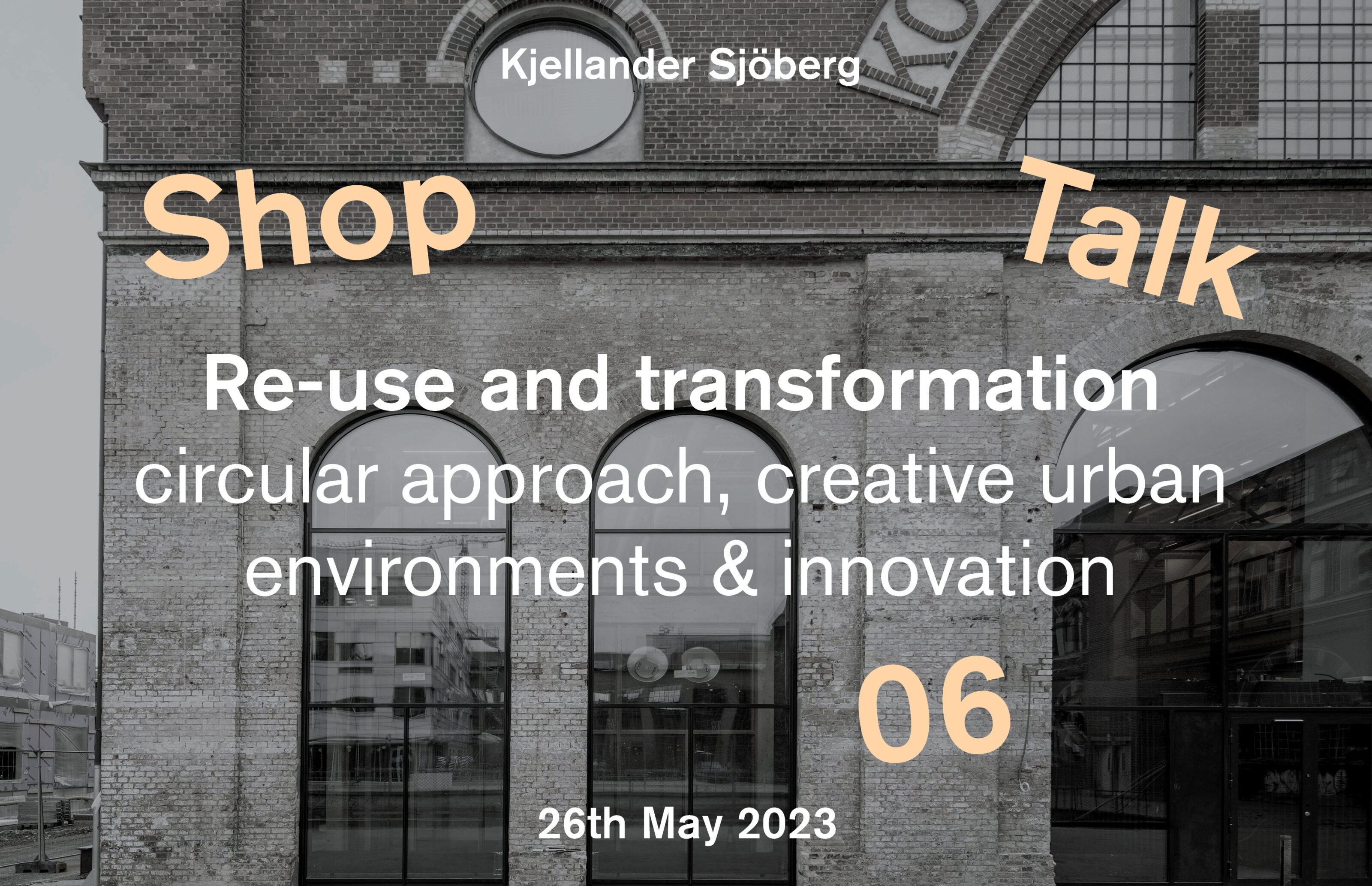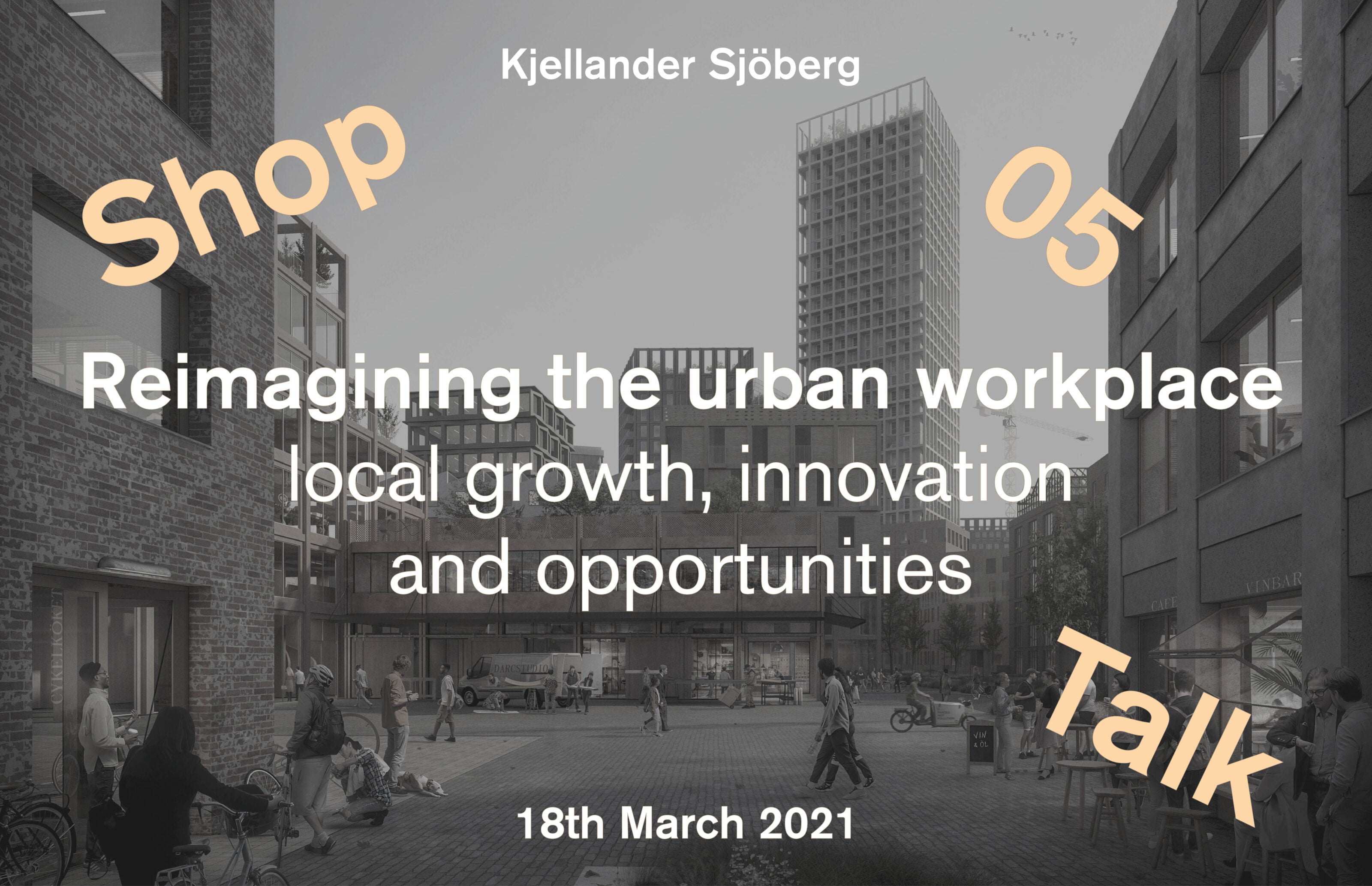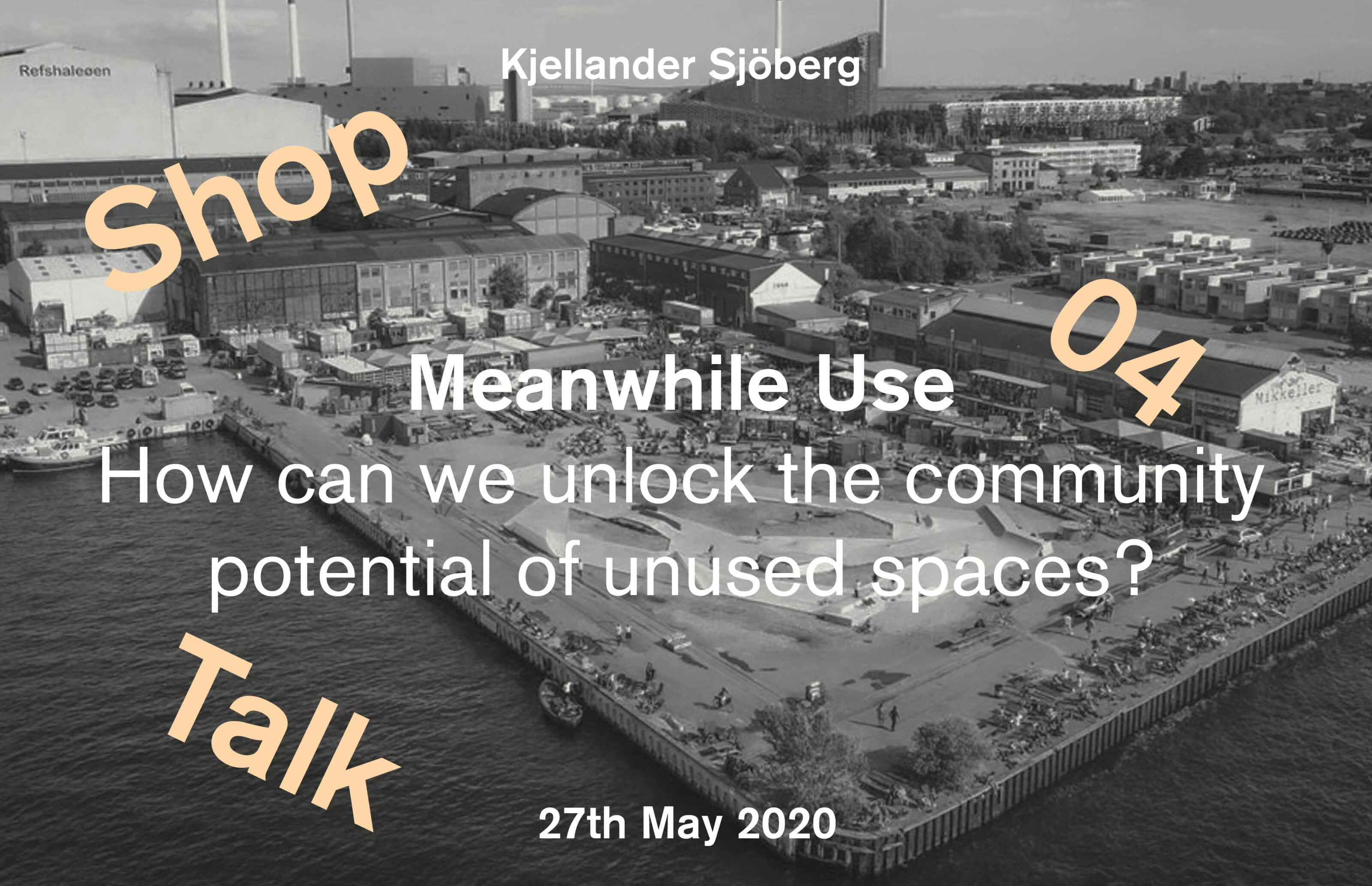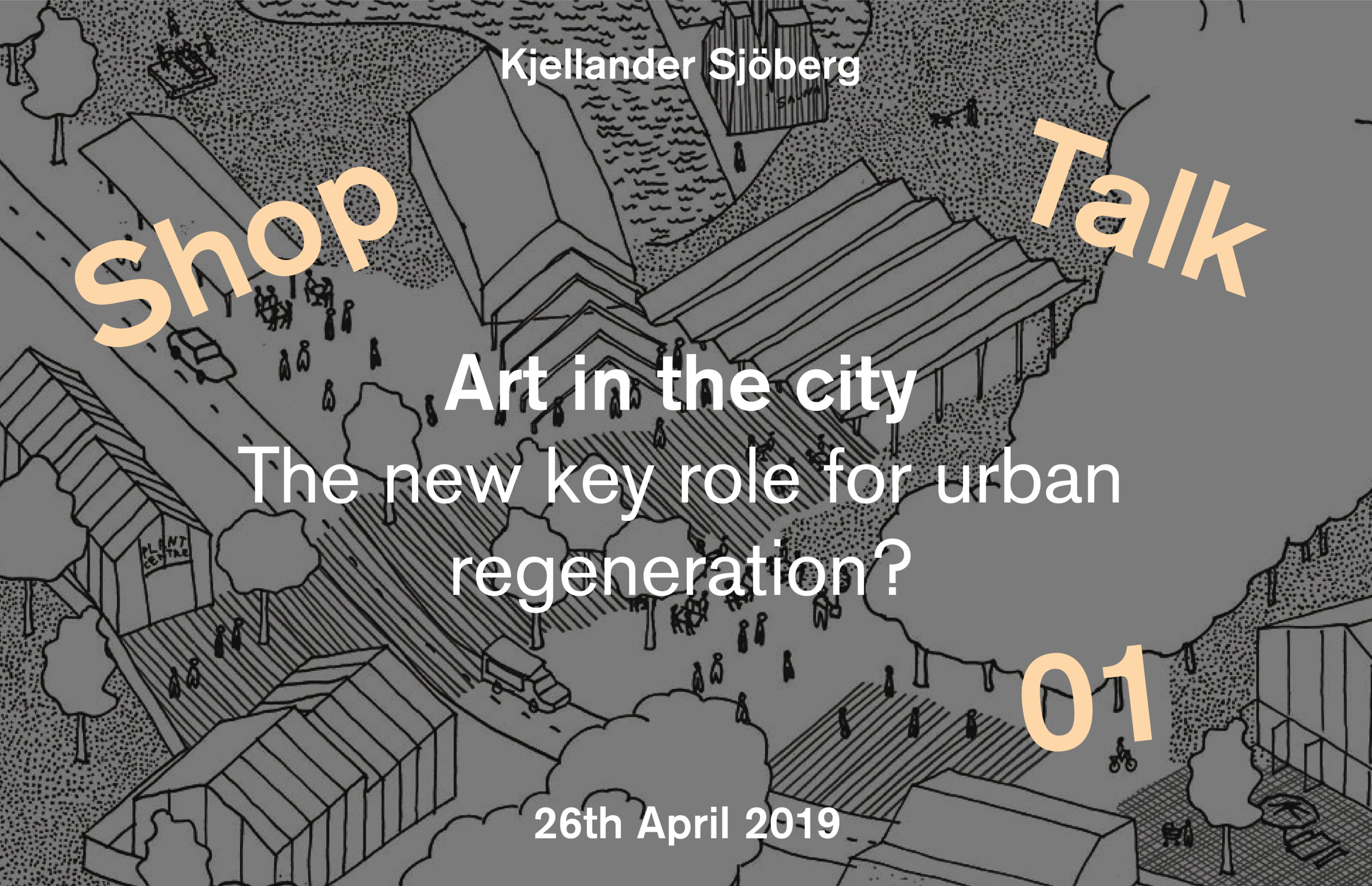Shop Talk
Shop Talk is an informal platform for discussions between actors involved in the planning and development of the city, that in different ways contribute to the creation of new qualities and narratives. A series of reflective conversations aiming to raise knowledge, inspire, create dialogue, meeting opportunities and to exchange experiences. Low-key, no microphone, no minutes, without an audience or preparation.
Shop Talk 13: Circularity and transformation #3
Collaboration in renewal processes
A roundtable on circular strategies and transformation – exploring how we can adapt and creatively re-use heritage environments and buildings with varying levels of significance. What issues and conflicts of interest tend to arise in regeneration processes involving existing industrial and urban contexts? What role does the already-built environment play and how can we best utilise its values? This session digs deeper into the challenges and difficulties that occur, and explores good examples of how to address them.
We have an excellent, highly competent and fantastic panel!
This Shop Talk is part of a series of conversations around circular strategies and transformation.
Shop Talk 12: Roles in sustainable urban development
Transition and systemic change – what does it mean for the industry?
The urban development sector is undergoing a transformation and is on the verge of a systemic shift. A likely scenario is that the amount of new construction will decrease dramatically, with a renewed focus on the existing built environment, on the transformation and maintenance of what already exists, ranging from neighbourhoods to urban blocks, buildings, and interior adaptations. At the same time, we must meet societal needs for versatile spaces – for community, care, education, work, production, leisure, health, services, and homes.
Shop Talk 11: Circularity and transformation #2
Reuse of the already built
Open discussion about conversion and transformation of the already built – cultural environments and buildings with diverse levels of significance and conservation value – seen from a circular sustainability perspective.
What are the values and characteristics they can contribute with? In which time frame? What are the challenges and opportunities we encounter in reality?
This edition of the KS Shop Talk is a part of a wider series focusing on circular strategies and transformation.
Shop Talk 10: Circularity and transformation
Reuse of the already built
Open discussion about conversion and transformation of the already built – cultural environments and buildings with diverse levels of significance and conservation value – seen from a circular sustainability perspective.
What are the values and characteristics they can contribute with? In which time frame? What are the challenges and opportunities we encounter in reality?
This edition of the KS Shop Talk is a part of a wider series focusing on circular strategies and transformation.
Shop Talk 09: What do we add to the already built environment?
Rosengård: needs, care and aesthetics
How do we best take care of the already built urban environments? How do we identify the residents’ needs? How can we introduce new qualities and activities with good intentions without distorting or removing what works and is good? Is the approach antiquarian or development-oriented? Do we set the same requirements on quality of life, sustainability, design and everyone’s opportunities throughout the entire city? How do we establish relationships to the existing character and aesthetics of a place?
Shop Talk 08: Urban development with children and youth
Involve and listen to more voices in the planning process
How do we create processes for developing active, healthy urban environments which make better conditions and opportunities for children and youth? Children are experts in their immediate setting and can participate in dialogue, design and management of their living environment. How can their involvement result in a real, tangible change where places are shaped for girls and young women, not only for boys and young men? How do we prevent restrictive physical environments where movement and freedom of the young gradually diminish?
Shop Talk 07: Ownership of the public realm
Create inclusive active urban spaces – open for all
How do we empower communities and promote sharing of urban places? Who decides what can we do in a public space? What can we do to devise a more permissive lively public realm open to initiatives, where more people feel at home? A joint commitment of many – how do we create constructive processes with positive outcomes?
Shop Talk 06: Re-use and transformation
Circular approach, creative urban environments & innovation
A conversation about re-use and transformation of the already built – from the perspective of planetary sustainability, investigating potential contribution of circular approach in development of urban environments and places to create liveable neighbourhoods with social opportunities.
Shop Talk 05: Reimagining the urban workplace
Local growth, innovation and opportunities
There is a great potential in the development of future urban environments. Creating conditions for mixed activities and movement flows informed by the sense of community is one of them. Another example could be innovation clusters and workplace districts fit for new economic models. How could a neighbourhood be shaped to promote long-term sustainable and diverse businesses? What might be the programmatic content for innovative urban structures where various social forces cooperate?
Shop Talk 04: Meanwhile Use
How can we unlock the community potential of unused spaces?
Such unused or underused spaces are often referred to as “meanwhile” as they are interim solutions, ways to rejuvenate spaces while waiting for long-term development plans or construction to commence.
How can these projects be cleverly integrated into urban renewal; drivers to create public value and new experiences? With expanded cultural and employment possibilities. Could a meanwhile-strategic-approach ensure that urban development and building projects become less exposed to “the unpredictable gamechangers” (such as Covid-19) and instead have the potential to drive innovation and community engagement?
Shop Talk 03: Media and architecture
Media and journalism play an important role in today’s public discussion about architecture and built environment. Perhaps media has even become its co-creators, alongside with other actors within the urban society.
Putting urban environments and buildings into perspective – from a historical, cultural and international point of view – can media contribute to a deeper and more nuanced discourse on what the built environment should or can do? On what expectations, dreams and basic requirements can we as citizens, users, developers, planners and politicians set?
Shop Talk 02: The Permissive Street
The street is probably the most important public space in a city, connecting us directly to each other, taking us places and providing a space to meet, occupy, enjoy and walk through.
The point of departure for this discussion is the sum of possibilities of a street being a space to inhabit. A public space inviting for all, where people of various backgrounds, ages and lifestyles can meet, stay and in some way share values and together shape a community.
Shop Talk 01: Art in the City
How may art contribute to development and regeneration; in what way can it support community, improve quality of life, open our senses and affect how we experience the city? Have artists taken the role of urban curators, gaining the knowledge and capacity to shape civil dialogue processes, creative communities and placemaking where art plays a key role? We certainly believe so and look forward to new exciting collaborations and processes.
